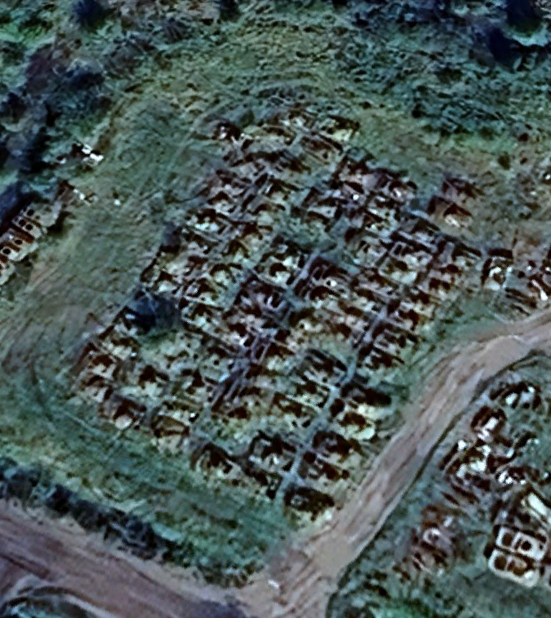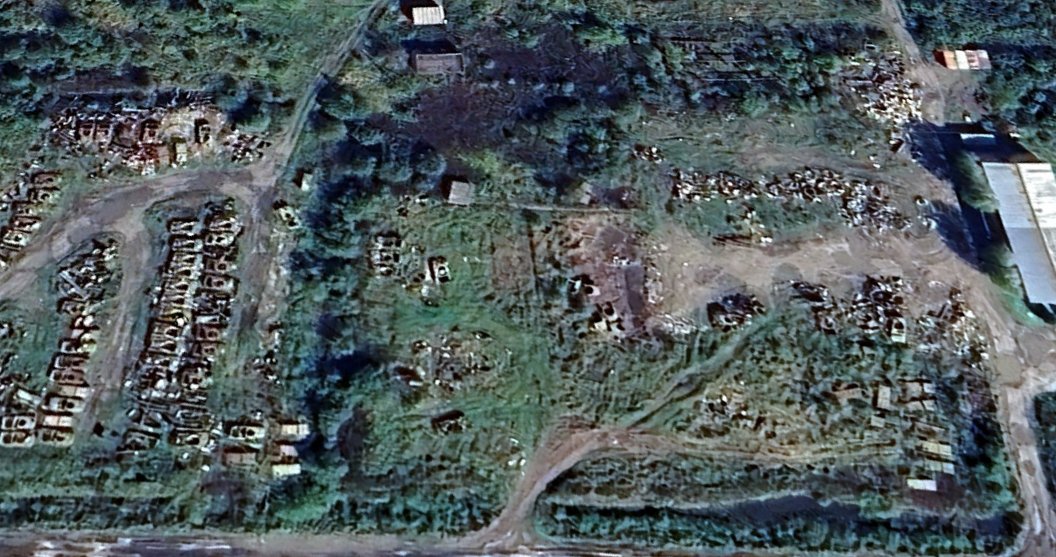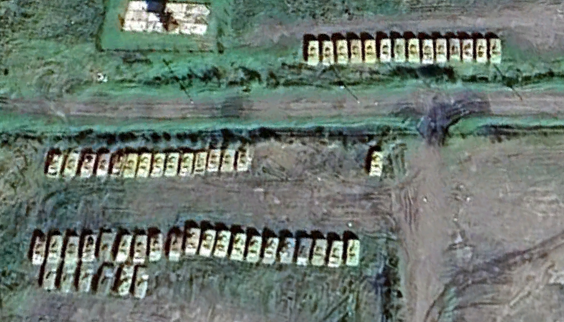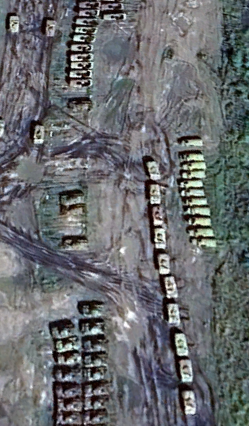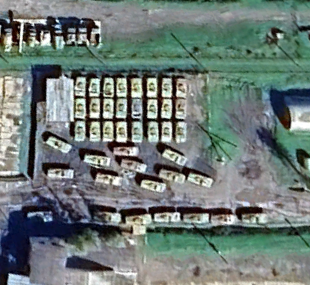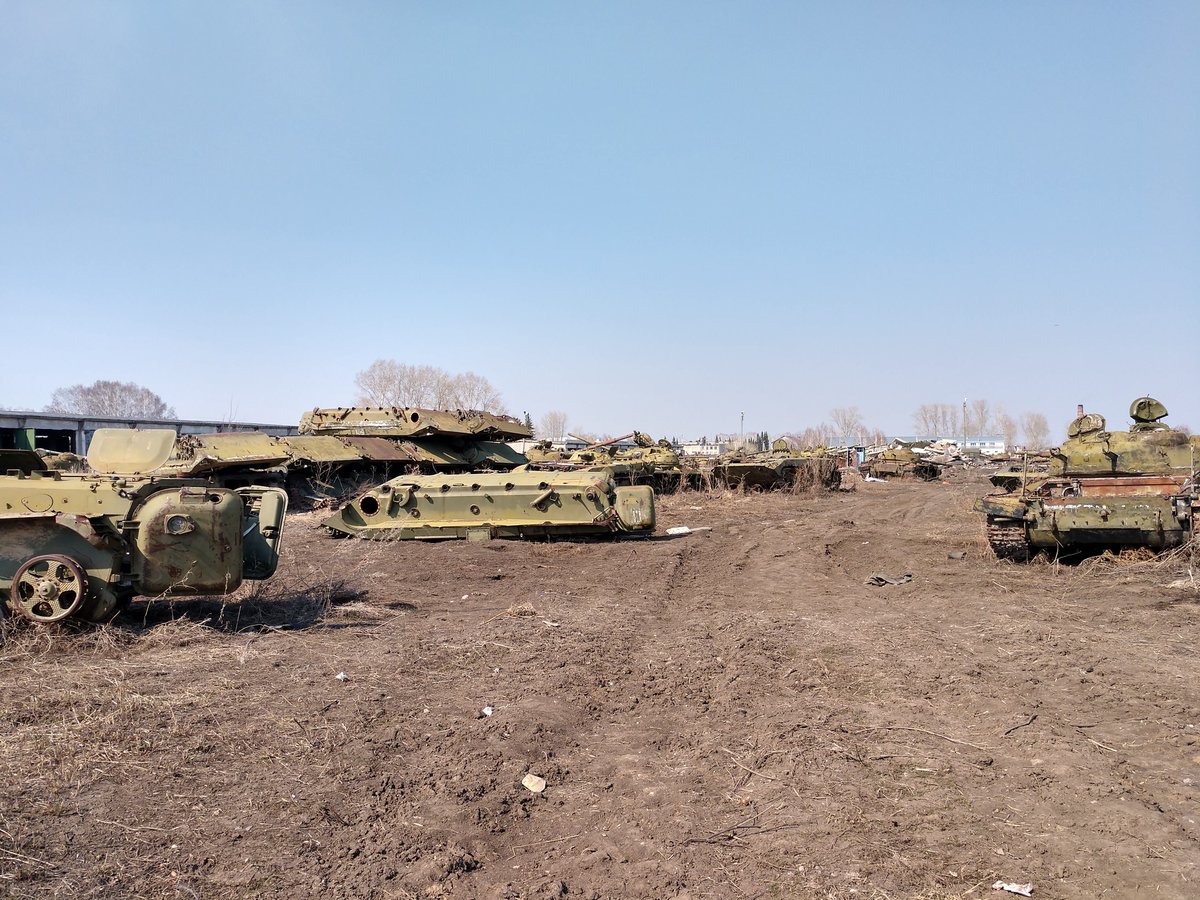1/ On sheds, scrapyards and parking lots: short thread on some caveats about Russian military storage bases. 

2/ I mentioned a while ago that I was planning a thread on these topics, and finally it's here. This is mostly about explaining some interesting subjects about Russian stored equipment and how it can help unsolve part of the mistery of how much more potential equipment remains there.
3/ First I want to talk about scrapyards. On the thumbnail is the most famous one, the local scrapyards of the 1295th base at Arseniev, of which I have talked several times and that's a great example of this particular subject.
https://x.com/Jonpy99/status/1766829807830987164
4/ Practically all storage bases have a local scrapyard where they destroyed mothballed equipment that was not classified as fit anymore for various reasons: it could be too obsolete, it could exceed CFE numbers, it simply was beyond their capacity to mantain such number of equipment (even with the typically atrocious post Soviet storage standards)...

5/ Since the war started, scrapyards, which previously held junk for years without it being moved, suddenly started emptying in many places. I want to show some exampled of this: first, I'm linking again my previous post of the 1295th:
https://x.com/Jonpy99/status/1750565689453076911
6/ In the most recent footage they haven't removed more equipment from the scrapyed; instead, they have moved junk from the active part of the base to said scrapyard.
9/ At some other bases the number of scrapped hulls has increased tho. The 94th arsenal it's one such case, due to the cannibalization of artillery: prewar vs during the war.




10/ In most recent footage which I can't share the number of broken hulls has dramatically increased at many bases tho, as I said yesterday.
https://x.com/Jonpy99/status/1782022326776676732
11/ This isn't conclusive at all, but I find very interesting that early during the many several of the biggest storage bases saw an unprecedented drop in the number of stored scrap, and at many other broken hulls were rearranged in rows. I can't assure it, but I guess part of it was used to provide spare parts for damage equipment in Ukraine, even if it was just hull parts.



13/ Many have tried to speculate how much equipment could be stored inside these, specially before the invasion broke out. Both @HighMarsed and the @InstitutAR did good analysis on this.
https://x.com/HighMarsed/status/1724451895622652153
15/ It's indeed almost certain that the most modern and best preserved stored equipment would've been stored inside garages. However, I doubt that most sheds actually were used to stored equipment. Most likely, a biggest share of them were used for critical facilities such as repair workshops, spare parts storage and such.

16/ @Ath3neN0ctu4 recently found many interesting pics of storage bases, including multiple ones inside hangars that point out exactly to this:








18/ But that's not the only point about hangars that supports this theory. Another intersting thing is that they have kept demolishing them at an steady rate for years, even after 2022. 

22/ And many other bases have rundown sheds that clearly would be better maintained if they were use for something important. Just some pics here because I really have no need of going crazy reviewing base by base and looking at every shed:






23/ To sum this up, hangars probably didn't hold as much equipment prewar as many estimated, and they probably aren't even that useful when the Russian military is actively demolishing many of them, and has been doing this for well over a decade due to a lack of funds and use. 

24/ Finally, the last, but not least important topic I want to talk about today: how the way stored equipment is lined up can tell us a lot about their state and usefulness. 

25/ You see, I'm running out of time, so I'll finish this last part of the thread later today. Hope you have enjoyed it so far.
26/ I forgot to mention it when explaining storage bases scrapyards, but neither me nor @HighMarsed include the junk in those in our count, not even while classifiying it as broken equipment. I do however count broken equipment found in active parts of storage bases.
27/ Back to work. As I was saying, the way equipment is lined up in rows can tell us a lot about their readiness. "Good" equipment is usually pretty well lined up, while "bad" equipment is left as it was parked a long time ago. Compare the armored vehicles at the 3018th/6018th before the war:



27/ Indeed, the first picture shows the local junkyard, while the second one is the main section of the part that held active armor.
31/ In cases were all equipment was pretty ordered, it was pretty quickly removed. A great example of this is the former Ukrainian military depot at the outskirts of Sevastopol:
https://x.com/Jonpy99/status/1769272075741434013
32/ I could keep talking in even more detail of these topics, but I think by now you all have get the gist of it. So that's it for today, hope you liked it! I'll try to get some actual count numbers posted here preeeeetty soonoooon, at long last.
33/ In case I wasn't clear enough, well lined armor was probably parked there on their own, while chaotic rows most likely had armor towed there, not powered on their own engines.
https://x.com/Jonpy99/status/1782505621499097350?t=0uSIhjc_YrRhvGhCZRnFkg&s=19
• • •
Missing some Tweet in this thread? You can try to
force a refresh























